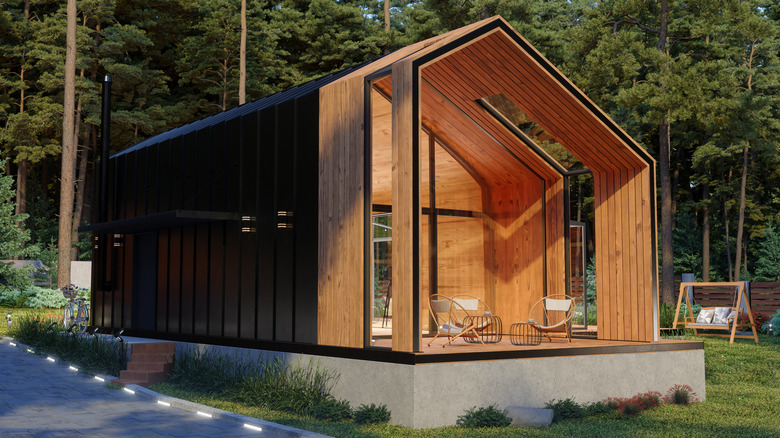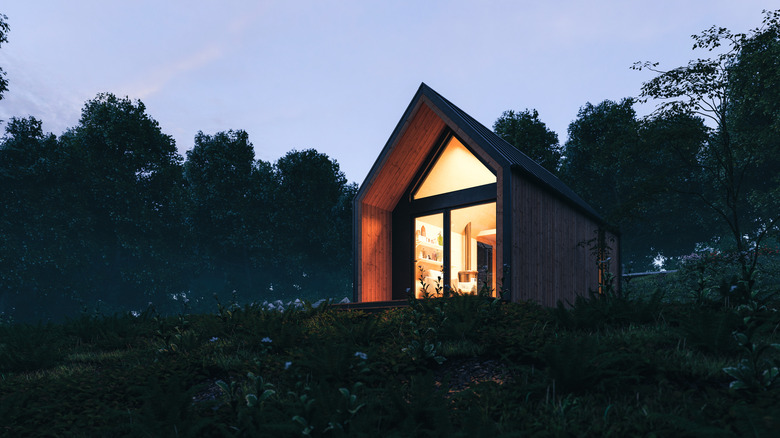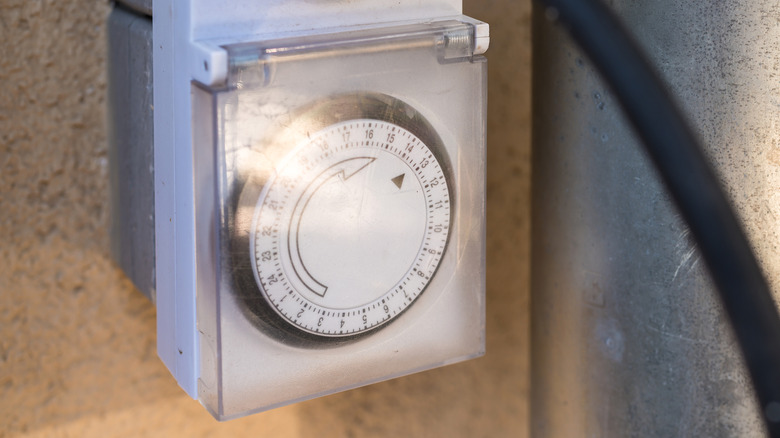Tiny Home Security Tech: Protecting Your Compact Dwelling From Unwanted Visitors
We may receive a commission on purchases made from links.
Tiny homes are currently the most interesting development in residential architecture by far. Developed as a response to both homelessness and home prices, a tiny home can be your main residence, a summer cottage, or a second separate residence on your main home's property. Some tiny homes are so small they can be towed away. In fact, some are mounted on wheels to make it easy to change locations. This produces a huge security risk for such a small structure: Not only can a tiny home be broken into and robbed, like any other house, but it can also be stolen outright.
So what steps can a tiny homeowner take to ensure their lilliputian lair will be there when they return to it? We looked up some of the most effective ways to secure your tiny home, but before we delve into the list, remember that anything that works for a full-size house will work for its wee small cousin. Do all the stuff you would for a regular home:
- Don't go cheap on locks. Use quality hardware, whether you use a keyed or a keyless entrance.
- Install cameras (with "you are being filmed" signs, a proven deterrent), alarms, motion sensors, lights, and any other security devices within your budget. Cloud-based recording is something tiny homeowners should look into because even if your home is stolen, the footage will be available.
- If you have neighbors (and they like you well enough), tell them when you will be away. Offer to watch their house when they go away as a reminder of the benefits of being neighborly.
With those tried-and-true tactics mentioned, let's proceed to specific steps for keeping your tiny home where you put it.
Use a hitch lock
If your tiny home is on wheels, chances are it has a trailer hitch, which, to a thief, is like a sign that says, "Back up the truck and steal me!" We would rather they didn't, so if you have a hitch, you should have a hitch lock. Many thefts are crimes of opportunity, and the sight of a large, heavy hunk of metal obstructing their purchase point on your diminutive dwelling makes stealing seem like a whole lot of work, which is what most thieves are looking to avoid.
Hitch locks are not that expensive, but you might have a reason not to want to use one. In that case, you can try to make your hitch inaccessible. You can tow it up against a tree or boulder or park a vehicle across it. Additionally, placing large, heavy objects between your tiny home and the road can make stealing it seem too close to an actual job.
Chain your house down
If your tiny home is next to a tree or some other large, immovable object, then a large, heavy chain is the solution to home security. The mere sight of your house being secured to fencing, a flagpole, a storm grate, or even another house turns an easy, cut-and-run robbery into a much more complicated affair, and that's usually all you need to deter a would-be tiny home thief.
If you are in a wide-open area with nothing to anchor to, there is an alternative: wheel locks. These ingenious devices, similar to the boots that the traffic police will place on a scofflaw's tire to compel payment of fines, make the rolling away of your tiny home quite impossible unless the thief has the tools, the time, and the inclination to remove the locks. Wheel locks are inexpensive, and you do not have to buy a lock for every wheel (one or two is sufficient).
Hide a GPS tracker
Fortunately for owners of anything that can be moved, we live in an age of Bluetooth and GPS –which can also be used as tiny home gadgets. From the low-cost Apple AirTag to more robust models requiring a subscription service, a GPS tracker will ensure that if your tiny home is stolen, you know exactly where it's been taken. Just keep in mind how a tracker works, and don't place your tracker where it is surrounded by metal, or its signal will not be picked up.
Speaking of placement, remember that experienced thieves will be aware of the possibility of GPS tracking and will be looking for a tracking device. That's why it's important to hide your tracker, but again, avoid hiding it under so many layers or inside metal so you are sure to get a strong signal should you ever need to track your house. Try to attach the tracker to the house itself (on a roof rafter or behind some molding) rather than to furniture, in case the thieves remove the furniture as part of their theft.
Pretend to be home
Another home security tactic tiny homeowners can borrow from owners of full-size houses is a little subterfuge in the form of making it seem like you are home when you are not. Timers for electrical outlets are dirt cheap, and if you use separate timers for different lights and, say, a radio or TV, you can create the illusion of activity inside the house that should deter anyone who might be casing your neighborhood for likely victims.
Another possibility in the same vein would be to arrange for a house sitter. An actual person inside your house will definitely dissuade tiny house theft. But this is not always a possibility, of course, and the beauty of an electric timer is that it can be set to go on and off multiple times per day, creating a truly busy impression. You can also have outdoor lights switched on and off, which is a red flag for thieves of all kinds.
Don't make it easy for them
You could certainly prevent the theft of your tiny home by mounting it on a foundation, but that would make any future moves for your home exceedingly difficult. For many, the mobility of a tiny home on wheels is a big part of the appeal. But you could replace the wheels with jacks instead. The switch back to wheels would not be nearly as much effort. This would be a happy medium between making your tiny home theft-resistant and keeping it mobile. A fence is another obstacle you could put between your tiny home and would-be thieves. Building a fence around your house makes it much more difficult to access it, especially in the quiet, surreptitious way thieves like to operate.
One trick you might have already thought of is moving your tiny home to a safer environment if your tiny home is mobile. There are tiny home communities and other places where the proximity of other homes keeps thieves at bay since there is almost always a witness, and thieves don't like witnesses.





